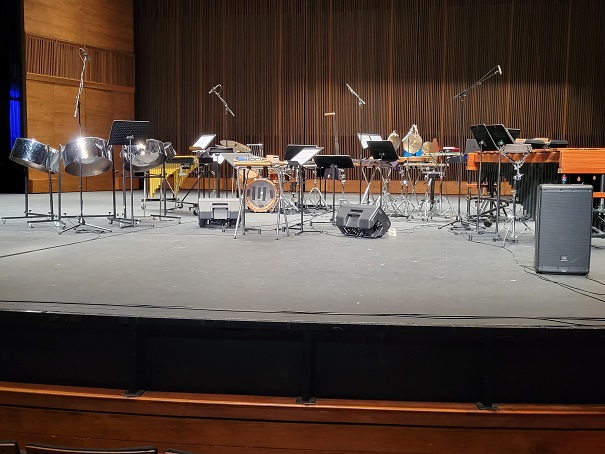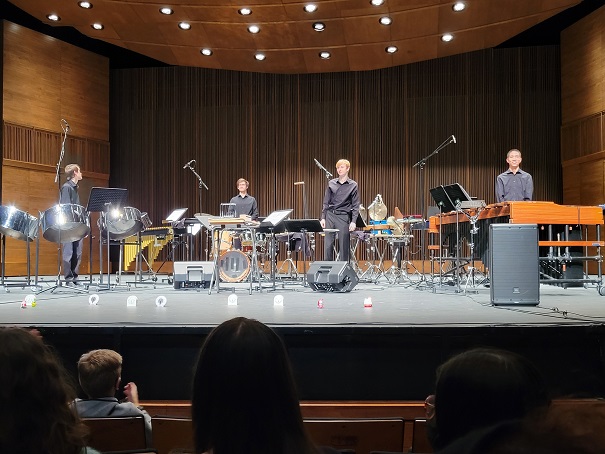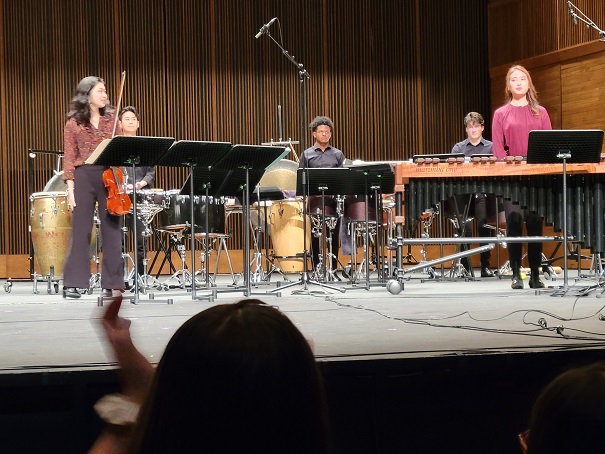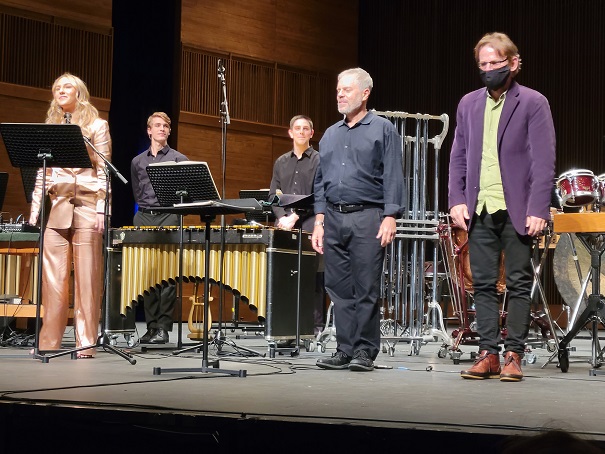Concert Diary: Percussion Music of Steven Mackey
November 25, 2021
New York, N.Y.
We usually think of percussion music as loud and raucous, but the percussion music of American composer Steven Mackey (b. 1956) is often more contemplative. Rather than overpowering the listener with pounding rhythms, Mackey’s music allows a more thoughtful wandering through the soundscape. This was my overall impression following a concert on Saturday (November 20th) called TIME CYCLE: The Percussion Music of Steven Mackey at the Peter Jay Sharp Theater featuring the Juilliard Percussion Ensemble. Tickets were free.
The ensemble began with perhaps Steven Mackey’s most famous percussion work, It Is Time from 2010, which was commissioned by So̅ Percussion. (There’s a YouTube video of them performing the work.) It uses a mix of traditional percussion (cymbals, gongs, vibraphone, cowbells, marimba, steel drums, bongos) with more exotic objects, such as an analog metronome, wine bottles, a Newton’s cradle, kitchen timers, and windup toys. About 40 minutes in length and divided into four sections, the four percussionists wander around the stage, which looked like this just prior to the performance:
The steady click-click-click of the metronome is how It Is Time begins, but then that rhythm is built upon by the percussionists. These rhythms are often irregular, but have such a relaxed pacing that time seemed suspended. Towards the end, I felt as if I were hearing the refrain of an ethereal song. Here are the four performers during curtain calls:
Notice the kitchen timers and windup toys along the front of the stage.
Steven Mackey then joined David Serkin Ludwig (dean and director of the Music Division at Juilliard) on stage to discuss his work. During intermission the stage was set up for the two other works on the program.
The first was a 15-minute work from 1995 for violin, marimba, and percussion quartet entitled No Two Breaths, the title (and music) inspired by a quote by the Indian singer Pandit Parnath: “No two breaths are the same.” I loved this piece, a slow breathing rhythm established by a low rumble on bass drum with the violin and marimba pulsing in and out. Here are the soloists in front (Whitney Takata on violin and Yoon Jun Kim on marimba) and the percussion quartet in back (one obscured) during curtain calls:
Then came the world premiere of Time Cycle, which incorporated two works from 2014 — song cycles for soprano and percussion quartet entitled Before It Is Time and Madrigal — with a new “song cycle within the song cycle” (as Mackey referred to it), Afterlife with five songs for soprano and percussion. The musicians were joined on stage by Daniel Druckman to conduct.
Time Cycle sounded less like a composition for percussion and more like a song cycle that happened to use percussion accompaniment. As the title suggests, Before It Is Time might be a preface to It Is Time, and it used some of the same instruments, such as metronome, melodica, and steel drums. The percussion accompaniment to Madrigal was at first very gentle but built up to more frantic rhythms, then fading out. I wish I could hear Afterlife again: Some of the settings to the poems seemed like breath-like arcs, similar to No Two Breaths.
Here are soprano Julia Stuart, conductor Daniel Druckman, and Steven Mackey during curtain calls:



